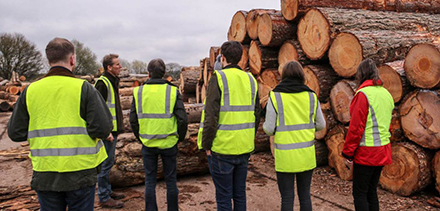After a year of near-record imports, the UK timber industry is likely to find itself entering a period of greater stability in 2022. Source: Timberbiz
The latest Timber Trade Federation (TTF) UK statistics show the volume of timber imported between January and October 2021 to be 28% higher than the same period in 2020 – reaching a total of 10.3 million m3 in the year to date.
Yet even as this milestone is reached these statistics reveal a significant shift in timber import patterns with volumes 16% lower in October 2021 than in the corresponding month in 2020.
This marks the first month in 2021 where the volume of timber imported was below its corresponding level from 2020, and the end of 15 months of continual growth in UK imports of timber and panel products.
Softwood import volumes reflected these changes with just 557,000m3 entering the UK in October 2021 – which is very close to the average volume of softwood imports seen between 2015 to 2018 (559,000m3).
These shifts seen in the timber industry’s import patterns can likely be attributed to a return to more ‘regular’ demand for new housing and RM&I seen in Q4 2021.
After such a long period of volatility in the structural softwood sector, it is good to see the October import statistics showing a return to stability.
As predicted throughout, with stocks having been replenished throughout the supply chain we are seeing price pressure reduce and import volumes return to more normal parameters.
This suggests an end to some of the market disruption we saw last year where our industry was working above and beyond to ensure exceptionally high construction demand was met.
However, the market is still some way off ‘normality’ as Brexit, HGV driver shortages and Covid-19 disruption continue to affect supply and demand, as well as labour availability.
Given the increasing demand for low-carbon construction products to help us build in a climate crisis, timber will remain an essential sector to building back better in 2022.






